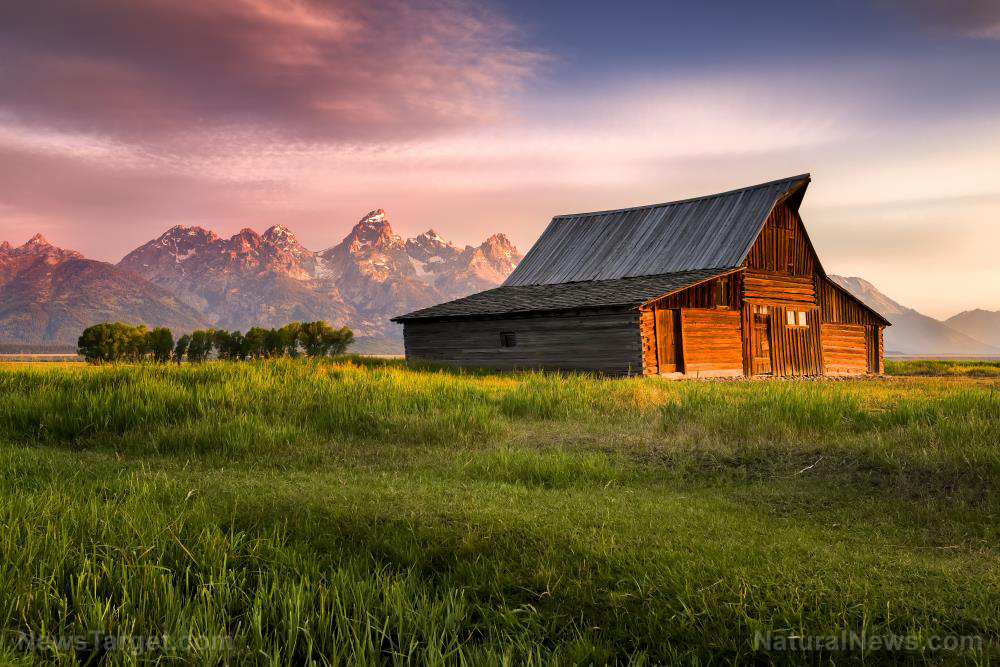
Even if the weather in your area is perfect for growing crops, it's still a good idea to read up on short-season annual crops and different methods of cultivating vegetables when the weather is much warmer. As a gardener, you should know how to adapt to various changes.
A lot of plants found in the desert can withstand harsh weather conditions. Their life cycle starts when the rain starts to fall, triggering germination and completing the cycle around the time the short wet season ends.
Strategies for growing food during drought and heat waves
Don't let warm weather and a water shortage deter you from cultivating crops, especially if you rely on it as a food source. These options can boost crop resilience and improve food production during drought and heat waves. (Related: How to prepare for a drought.)
- Eliminate monoculture - The scientific definition of monoculture is vegetation made up of a single species, and its agricultural definition is a field that only contains a single crop instead of multiple crop species. To successfully grow crops in the midst of a drought and heat, you need to cultivate different varieties of the same species in the same plot. By combining varieties of the same species, or even related crops, you'll have plants with different flowering times and water requirements. It'll also be easier to see firsthand how the species tolerates frost and heat, allowing you to prevent further damage to your entire harvest.
- Plant perennials - When you live in an area with drought or heat waves, it's crucial to use the intercropping of annual and perennial crops. This can help establish polycultures that can collect more rain and sun and require less fossil fuel and groundwater. Alley cropping, or planting vegetables under canopies of fruit trees, can protect crops from extreme temperatures and minimize any damage from hailstorms.
- Plant some drought evaders - Planting drought evaders during drought and heat waves means your crops will mature early and germinate during brief wet seasons when soil moisture levels are temporarily adequate. This can also help minimize the demand for irrigation and the risk of crop failure.
- Set up landraces - Create "boosters" by planting local varieties designed specifically for the natural environment of your garden. Observe the plants, then save seeds from the plants that flourish.
- Try intercropping - Practiced by the Native Americans, intercropping involves combing different vining plant varieties, like pole beans and squash. These two crops were then planted next to corn, millet, or sorghum so they could climb up the stalks of the latter. [Climbing] beans, corn, and squash were called "the three sisters" and the combined yield of this technique produced a higher yield than when the three crops are planted individually in the same space.
- Utilize microclimates - Use the landscape and moderate microclimates to your advantage so you can deal with a drought and heat waves. Try to match crop needs with the appropriate agro-habitat.
Crop varieties for drought- and heat-affected areas
If you live in an area prone to heat, drought, or water shortages, try growing these short-season crops. These often mature within in 60 days and they only need 25 percent less irrigation compared to traditional crops.
Chard:
- Fordhook Giant- 60 days to harvest
- Perpetual Spinach - 70 days to harvest
Corn:
- Black Aztec - 70 days to harvest
- Black Mexican - 62 days to harvest
- Harisnoso de Ocho - 55 days to harvest
Cucumber:
- Beit Alpha - 56 days to harvest
- Edmonson - 65 to 70 days to harvest
- Snake Melon/Armenian Cucumber - 50 days to harvest
Eggplant:
- Applegreen - 62 days to harvest
- Aswad - 70 days to harvest
- Ichiban - 70 days to harvest
- Turkish Orange - 65 days to harvest
Pepper:
- Belle Charleston - 65 to 70 days to harvest
- Golden Cal Wonder - 65 days to harvest
- Tabasco Short Yellow - 75 days to harvest
Lima bean:
- Alabama Blackeyed - 60 to 65 days to harvest
- Henderson Bush - 60 days to harvest
- Willow Leaf - 65 days to harvest
Melon:
- Casaba Golden Beauty - 90 days to harvest
Pole bean:
- Blue coco - 55 days to harvest
- Rattlesnake - 60 days to harvest
Tomato:
- Native Sun - 50 days to harvest
- Orange King - 55 to 60 days to harvest
- Ozark Pink - 65 to 70 days to harvest
- Porter - 65 days to harvest
- Tiny Tim - 45 days to harvest
Watermelon:
- Arkansas Black - 85 days to harvest
- Desert King - 85 days to harvest
- The Georgia Rattlesnake - 90 days to harvest
Short-seasoned crops are valuable, especially if your location is prone to droughts and heat waves. The techniques and crops listed above can allow you to have a bountiful harvest while also conserving water and energy.
Visit Foodsupply.news for more tips on how to grow crops during a drought or a water shortage.
Sources include:
Please contact us for more information.























